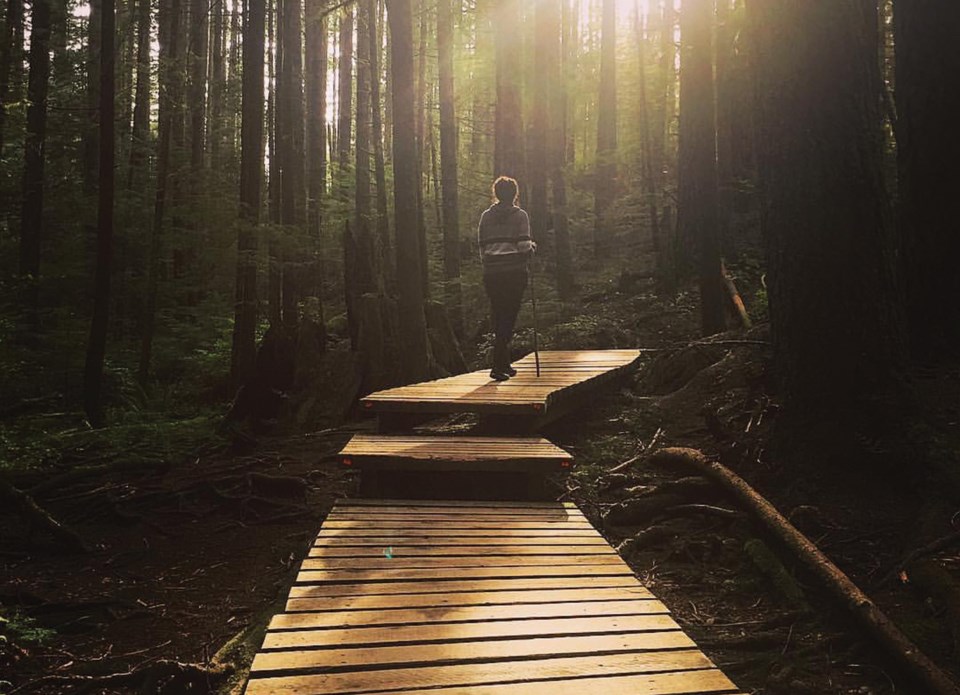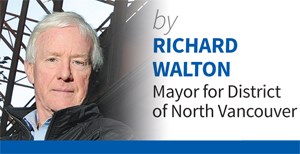Many years ago as a 22-year-old first-year teacher in Comox living in a rented beach cottage, I woke up to find myself surrounded by local mushroom pickers.
By the time the day ended and I returned from work, the forested area behind the cabin resembled Woodstock after the concert. Today, all over British Columbia connoisseurs of local mycological harvests pursue their seasonal activity, and North Vancouver’s forests are no different in drawing harvesters. But it isn’t that simple.
Forests are delicate places to roam and humans can unknowingly cause significant damage. For example, you’ve likely seen those peculiar, shelf-like fungi growing on the tree trunks, limbs, stumps and fallen logs throughout our forests. These growths, called conks, are broadly referred to as bracket fungi and are critical to the health of our natural environment.
These and the other types of fungi that live in our local woods, perform many important functions in the forest’s complex ecology. They help decompose dead plant and animal material and return valuable nutrients to the soil.
Those nutrients are then absorbed by neighbouring plants through their root systems, allowing them to thrive. Some fungi feed on host trees, creating wildlife habitat for an assortment of creatures in the resulting soft, dead wood. And mushrooms, the fruiting bodies of fungi, provide an abundant source of food for wildlife.
Recently, our park rangers have noticed an increase in people illegally removing bracket fungus from our parks. Some folks believe that some of the bracket fungi species have natural healing powers and harvest it for use in non-medicinal remedies.
While this may well be true, harvesting in our woods is both illegal and harmful to the forest ecosystem. Removing one species from the local ecology can very easily put other elements at risk. People may know their fungi but they are not necessarily aware of the broader biological importance a species has in the vicinity.
Maintaining balance in our ecosystem is key to ensuring the long-term health of our environment and ourselves. You need not venture far into our forests and parkland to see the incredible array of plants, animals and organisms that comprise our ecosystem. The clearcutting of much of North Vancouver a century ago accelerated soil erosion and destabilized much of the old growth ecosystem. As such, our forests are still recovering that vitality and it may be centuries more before it returns completely.

Each element of our ecosystem has a specific, ecological purpose, and each relies on the function performed by others for sustained health and ecological harmony. While most of us are familiar with the animals, trees and plants that comprise our ecosystem, few of us fully comprehend the important role played by other living entities like fungi.
And of greater concern, is that those who have been found illegally harvesting fungi often stray well beyond existing paths and trails, causing compaction of the soil and disturbing other vegetation and wildlife.
And it isn’t only fungi being illegally harvested; there are other plants and animals that have been illegally taken from our parks and forested areas.
I know to some this may not seem like an issue. But the restoration and preservation of our North Shore forest ecosystem should be top of mind for us all. We share that stewardship role as local residents.
Should you see something suspicious when you’re out in our forests and parks, please contact our park rangers and report it at 604-240-8754. It’s up to all of us to protect these vulnerable and treasured areas.



